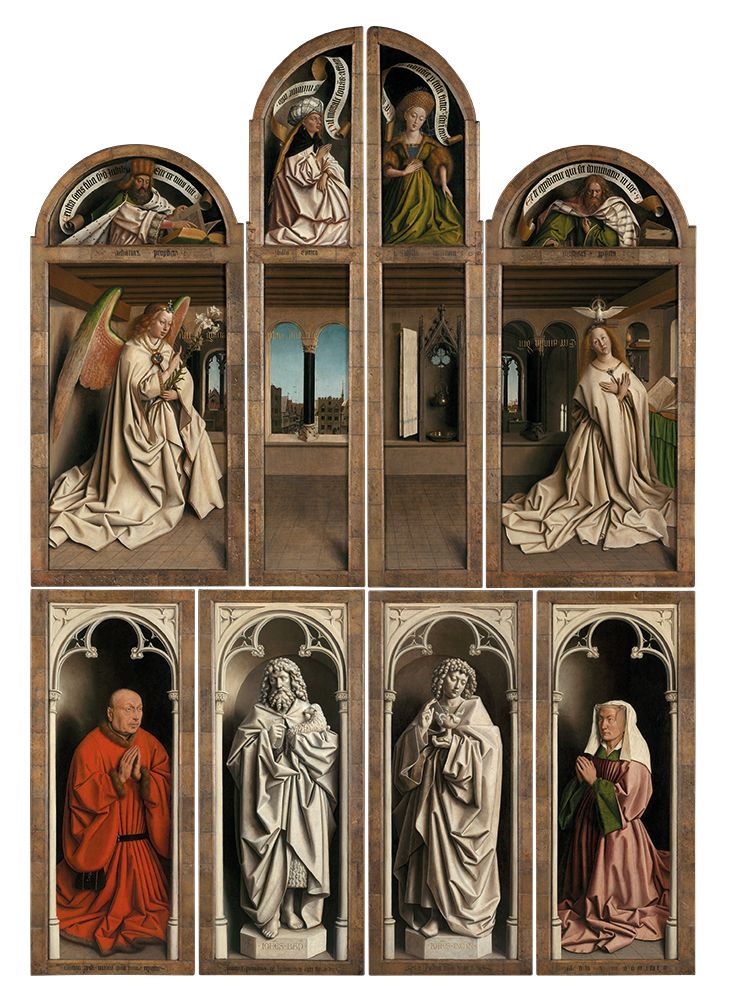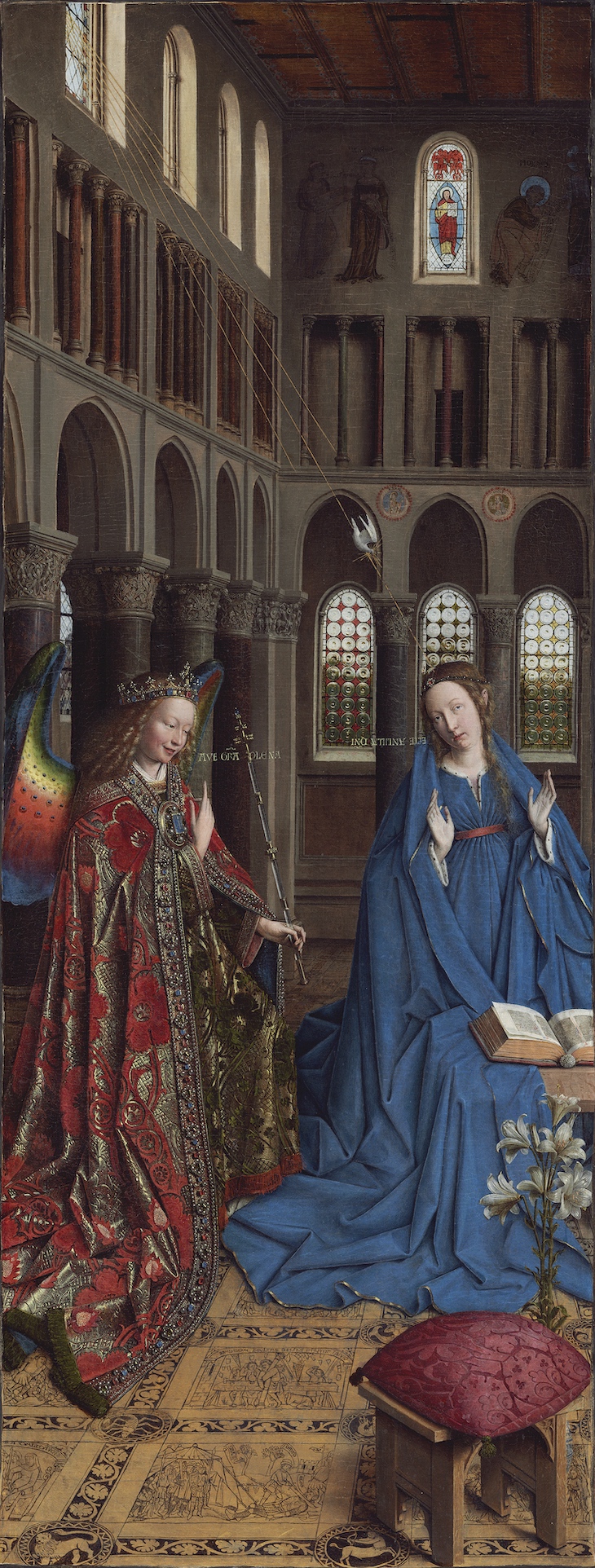‘Van Eyck: An Optical Revolution’
Museum of Fine Arts (MSK), Ghent
1 February–30 April
Ambition and intimacy are not the most natural of bedfellows. But the achievement of ‘Van Eyck: An Optical Revolution’ was that its curators realised more or less the grandest imaginable exhibition on its subject, in scope and scale, while allowing visitors a beguiling proximity to so many paintings by Jan van Eyck. Of 22 works ascribed to him, 13 were on display here; anchoring portraits and devotional works on loan from European and American collections were the eight restored outer panels of the Ghent Altarpiece, as well as the Adam and Eve from the upper register of its interior (the versos of the central outer panels).

Ghent Altarpiece (exterior; 1432), Jan van Eyck. Photo: Dominique Provost; © www.lukasweb.be – Art in Flanders vzw
Through 13 galleries, the exhibition provided what Apollo’s reviewer, Susie Nash, described as ‘near perfect conditions for close looking’. In splitting up the panels from St Bavo’s Cathedral, and displaying them at eye level, it gave visitors the opportunity to scrutinise Van Eyck’s surfaces, his feeling for light and his mastery of detail, and to revel in the honest humanity of his vision. While the display contextualised Van Eyck with contemporaneous objects and Italian paintings, it missed no trick in creating moments of intense drama in the juxtaposition of his works: the two versions of St Francis Receiving the Stigmata shown side by side; The Annunciation from Washington, with its jazzy archangel, in the same room as the corresponding panels from the Ghent Altarpiece; and, in the penultimate gallery, five of Van Eyck’s portraits with the panels depicting the altarpiece’s donors.

The Annunciation (c. 1434–36), Jan van Eyck. National Gallery of Art, Washington, D.C.
Beyond that drama was a sense of integrity, of an exhibition in the right place at the right time. Since 2012, the MSK Ghent has hosted – and encouraged visitors to follow – the restoration of the Ghent Altarpiece. In parallel with that project, the Closer to Van Eyck website has gathered and made publicly available high-resolution images, including those using scientific imaging techniques, of most of the artist’s works. In this context, ‘Van Eyck: An Optical Revolution’ felt like the dividend of local and international collaboration: several loaned paintings had been newly conserved for the exhibition; its robust catalogue contains 19 essays by leading Van Eyck scholars.
Almost 130,000 people were able to visit the exhibition before it closed – a casualty of the pandemic – halfway through its scheduled run in mid March. For many of them, as for me, the memory of it will have provided much consolation in the months that followed.
Thomas Marks is editor of Apollo.
The Winners | Personality of the Year | Artist of the Year | Museum Opening of the Year | Exhibition of the Year | Book of the Year | Digital Innovation of the Year | Acquisition of the Year | View the shortlists


























